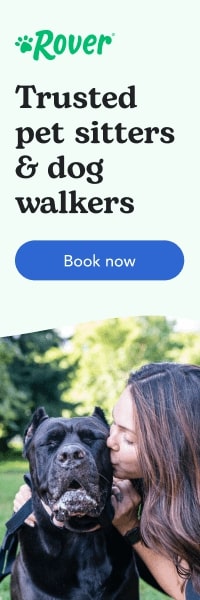Wildland fires can be terrifying, unpredictable, and devastating. If you live in an area prone to these natural disasters, it's important to prepare not just for yourself but also for your beloved canine companion. Dogs are family, and their safety should be a priority in any emergency plan. This guide will walk you through everything you need to know about wildland fire safety for your dog, so you can ensure their well-being in the face of danger.
1. Create an Emergency Plan That Includes Your Dog

Photo: google
Your wildfire emergency plan should incorporate specific steps for your dog. Here’s how to get started:
- Evacuation Routes: Identify multiple evacuation routes in case roads are blocked. Practice these routes with your dog so they’re familiar with the process.
- Safe Spaces: Know where you’ll go with your dog, whether it’s a pet-friendly shelter, a hotel, or a friend’s house.
- Designate a Caregiver: In case you’re not home during an evacuation, have a trusted neighbor or friend who can retrieve your dog.
2. Assemble a Dog-Specific Emergency Kit
Prepare an emergency kit tailored for your dog. Here’s what to include:
- Food and Water: Pack at least three days’ worth of food and water.
- Medical Records: Keep copies of vaccination records and any medications your dog needs.
- ID Tags and Microchip: Ensure your dog’s ID tags are up-to-date and that their microchip information is registered.
- Comfort Items: Bring familiar toys, a blanket, or a bed to reduce stress.
- Leash, Harness, and Muzzle: You may need these for safety in crowded or chaotic situations.
- First Aid Kit: Include items like bandages, antiseptic wipes, and tweezers.
3. Recognize the Signs of Stress in Your Dog
During a wildfire, your dog may experience stress or anxiety. Look out for these signs:
- Excessive panting or drooling
- Pacing or restlessness
- Whining or barking
- Refusal to eat
Comfort your dog with a calm demeanor, and use familiar items from their emergency kit to reassure them.
4. Protect Your Dog from Smoke and Ash
Wildfires produce harmful smoke and ash that can affect your dog’s health. Here’s how to minimize their exposure:
- Limit Outdoor Time: Keep your dog indoors as much as possible.
- Create a Safe Indoor Space: Use air purifiers and close windows to keep smoke out.
- Monitor Their Health: Watch for coughing, difficulty breathing, or eye irritation, and consult a vet if these symptoms occur.
5. Prepare for Evacuation
When it’s time to evacuate, having a plan in place can save precious time:
- Leash Your Dog: Keep your dog on a leash or in a carrier to prevent them from running away in panic.
- Load Emergency Supplies: Have your dog’s emergency kit ready to go.
- Stay Calm: Your dog will pick up on your emotions, so stay composed to keep them calm.
6. Reuniting After Separation
If you and your dog become separated, take these steps to increase the chances of reuniting:
- Use Social Media: Post on local community groups or pet recovery pages.
- Contact Shelters: Inform local animal shelters and provide a clear description of your dog.
- Distribute Flyers: Include a photo and your contact information.
FAQs: Wildland Fire Safety for Dogs
Q: Can smoke from wildfires harm my dog? A: Yes, wildfire smoke can irritate your dog’s eyes and respiratory system. Keep them indoors with purified air during smoky conditions.
Q: Should I leave my dog behind if I’m evacuating? A: Never leave your dog behind. Include them in your evacuation plan to ensure their safety.
Q: How do I calm my dog during a wildfire? A: Use a calm voice, offer comfort items, and create a safe environment. Familiar toys or blankets can help reduce their anxiety.
Q: What if my dog gets lost during a wildfire? A: Contact local shelters, post on social media, and ensure your dog has up-to-date ID tags and a registered microchip.
Q: Are there masks for dogs to protect them from smoke? A: Yes, specialized masks are available for dogs, though they may not tolerate wearing them. Consult your vet for recommendations.
Final Thoughts
Wildland fires are a serious threat, but with proper preparation, you can keep your dog safe. By creating an emergency plan, assembling a dog-specific kit, and knowing how to handle stressful situations, you’ll be ready to protect your furry friend no matter what comes your way. Remember, your dog relies on you for safety—be their hero when they need you most.














